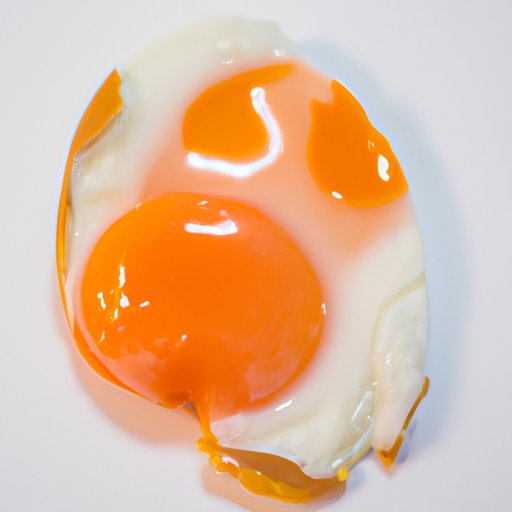
Introduction
Knowing if an egg is bad is crucial for ensuring your health and safety. Consuming bad eggs can lead to serious illnesses such as salmonella poisoning. Therefore, being able to detect bad eggs is essential. In this article, we will explore several simple tests you can conduct to determine if an egg is fresh or not. These tests require no special equipment and can be easily conducted at home.
Conduct the Float Test
The float test is the most popular method of determining if an egg is bad or not. The float test works because eggshells are porous, which means they allow air to pass through. As eggs age, the air cell inside the egg grows larger and allows the egg to float in water.
To conduct the float test, fill a bowl with cold water and gently place the egg inside. If the egg sinks to the bottom and lies flat on its side, it is a fresh egg. If the egg stands upright on the bottom, it is still good to eat, but not as fresh. If the egg floats to the top, it is bad and should not be consumed.
When an egg floats to the top, it means that there is too much air inside the egg, making it unsafe to eat.
Look at the Date
When buying eggs, it is essential to know how to read the date on the carton. The date on the carton refers to the date the eggs were packed, not the date they expire.
Reading a carton date is simple. The date is usually in the format of a three-digit code that represents the day of the year. For example, January 1st would be represented as “001.”
Eggs can typically last up to three weeks from the packing date. If you are unsure about whether your eggs are still fresh, you can use one of the other tests detailed in this article.
Use Your Senses
Your senses, mainly smell and appearance, can be useful indicators of whether an egg is bad or not. When smelling an egg, it should have a neutral odor. If an egg has a foul smell, it is likely bad and should not be consumed.
Appearance can also be a tell-tale sign of whether an egg is still fresh. A good egg has a bright and clear yolk and thick egg white. If the egg white is watery or the yolk has broken, the egg is no longer fresh.
Check the Shell
The shell of an egg can reveal a lot about its freshness. Cracks or damage to the shell can indicate that the egg is no longer fresh. When an egg is cracked, it allows bacteria to enter and can cause the egg to spoil quickly.
When examining the shell, look for any visible cracks or damage. If the shell is slightly cracked, the egg may still be safe to eat, but it should be consumed quickly. Eggs that have any substantial or visible cracks should not be consumed.
Shine a Light
Shining a light on an egg can reveal its freshness. A fresh egg will have a small air cell at the rounded end, while an egg that is no longer fresh will have a larger air cell.
To shine a light on an egg, hold it up to a bright light, such as a flashlight, and examine the size of the air cell. If the air cell is small, the egg is still fresh. If the air cell is large, the egg is no longer fresh.
The Water Test
The water test is another simple method of determining if an egg is fresh. To conduct the water test, fill a bowl with water and gently place the egg inside.
A fresh egg will sink to the bottom and lie flat, while a rotten egg will float to the top. If an egg floats but is not a full float, it may still be safe to eat, but it should be consumed quickly.
Conclusion
Finding out whether an egg is bad can be a simple process that doesn’t require any special tools. In summary, you can conduct the float test, look at the date, use your senses, check the shell, shine a light, and use the water test. These methods are simple yet effective in determining whether an egg is fresh or not. By conducting these tests, you can ensure that you and your family are consuming safe, fresh eggs.
We hope these tips have been helpful and encourage you to use these methods when determining if your eggs are fresh.




